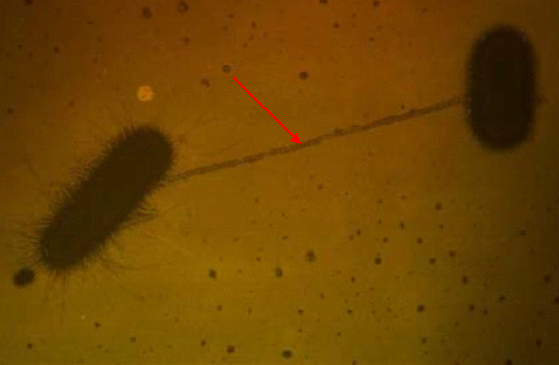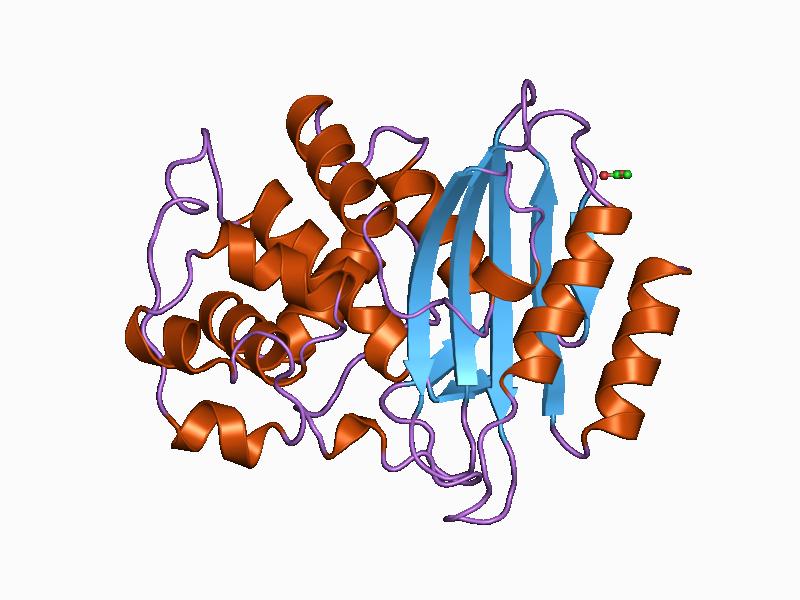Below are some of the major ways through which bacteria pass on their antibiotic resistance genes (ARGs) to other susceptible non–resistant bacteria in their environment:
TRANSDUCTION
Transduction is simply defined as the transfer of genetic material (i.e. exogenous or foreign DNA molecule) between bacteria by bacteriophages (bacterial viruses). It is the transfer of DNA from one bacterium to another by means of a viral agent such as a phage. Bacteriophages are viruses or viral particles whose host is a bacterium; and they generally infect bacterial cells. Bacteriophages or phages are a highly diverse group of viruses; and they serve a variety of economic importance inclusive of infectivity ability which they express in non-viral cells (e.g. bacteria, cyanobacteria, plants and animals).
In microbiology for example, bacteriophages are used as diagnostic tools especially for phage typing of bacteria, and for transferring gene of interest from one organism to another in gene transfer techniques. In transduction, antibiotic resistance genes are incorporated into a phage capsule which is later injected into another bacterium. In the process of transduction, bacterial DNA is transferred from one bacterium to another inside a virus that infects bacteria. These viruses are called bacteriophages or phage. When a phage infects a bacterium, it essentially takes over the genetic process of the bacteria to produce more phage. During this process, bacterial DNA may inadvertently be incorporated into the new phage DNA.
Upon bacterial death and lyses or breaking apart, these new phage goes on to infect other bacteria. This brings along genes from previously infected bacterium into the recipient bacterium. These genes might contain advantageous genes such as antibiotic resistance genes, which will leave the recipient bacterium resistant to a particular antimicrobial agent (e.g. antibiotics). Transduction occurs in Escherichia, Salmonella, staphylococcus and a variety of other bacterial species. Transduction in bacteria can be either generalized or specialized. In generalized transduction, practically any gene on the chromosome of the donor bacterial cell can be transferred to the recipient cell. It allows the transfer of any gene from one bacterium to another at usually a low frequency.
But in specialized transduction, only a small region of the gene of the bacterial chromosome of the donor cell is transferred to the recipient cell. Here, the transfer of genes is selective and efficient; and gene transfer occurs at a very high frequency unlike in generalized transduction. Specialized transduction allows the gene (or DNA) from an exact region of the donor cell’s chromosome to be integrated directly into the virus genome. This development will replace some of the genes (or DNA) of the recipient viral cell. It should also be noted that the transducing bacteriophage (i.e. the transferring bacterial virus) in both the specialized and generalized transduction is usually noninfectious. The reason being that the normally infectious genes in the recipient viral cell have been replaced by the integrated bacterial genes.
CONJUGATION
Conjugation (or mating) is the form of gene transfer and recombination in bacteria through which genetic materials are transferred from one bacterium to another through a direct cell – to – cell contact. It is the most important genetic transfer mechanism by which bacteria transfer their antibiotic resistance genes to susceptible bacteria through a physical mating process. Conjugation is mediated by a particular kind of circular DNA called a plasmidhttps://microbiologyclass.net/plasmids/, which replicates independently of the chromosome.
It is controlled by certain type of genes known as the F plasmids. Normally, a donor bacterial cell (containing the F+ plasmid) converts another bacterial cell (known as an F— cell) into an F+ cell that encodes a gene of interest particularly antibiotic resistance gene (Figure 1). The plasmid DNA being transferred is replicated through a type of replication known as the rolling circle replication mechanism. Many plasmids carry genes that confer resistance to antibiotics.
When two bacterial cells are in close proximity to each other, a hollow bridge like structure known as the “pilus” forms between the two cells. This allows a copy of the plasmid as it is duplicated to be transferred from one bacterium (the donor cell) to another (the recipient cell). This process called conjugation, which is a plasmid-encoded mechanism of gene transfer, enables a susceptible bacterium to acquire resistance genes for a particular antibiotic.

TRANSFORMATION
Transformation is a mode of genetic transfer in bacteria in which a piece of free DNA (genetic materials) is taken up by a bacterium and integrated into the recipient genome. During this process, genes are transferred from one bacterium to another as “naked” DNA. When bacterial cells die and break apart, DNA can be released into the surrounding environment. Other bacteria in close proximity can scavenge this free floating DNA and incorporate them into their own DNA or genome. This incorporated DNA can contain advantageous genes such as antibiotic resistance genes and benefit recipient bacterial cells. Both Gram positive and Gram negative bacterial cells are naturally transformable.
The process of bacterial transformation is a key foundation of the development of the field of molecular biology because the experiment (i.e. Frederick Griffith’s experiments with Streptococcus pneumoniae) that showed that deoxyribonucleic acid (DNA) was actually the genetic material of living organisms was laid to rest by a transformation experiment. Competence in bacterial transformation is defined as a state in which cells are able to take up free DNA released by other bacteria in their environment. Not all prokaryotic cells are competent enough to take up free DNA in their natural environment. Some prokaryotic cells are competent while some others are non-competent cells.
Competency in bacterial transformation is genetically determined, and this feature allows recipient cells to take up free DNA in their environment and be transformed in terms of its genetic makeup. Bacteria with thick cell walls and which cannot be easily transformed via the take up of free DNA in its environment can be physically made to take up DNA. This technique is called electroporation. Electroporation is a physical technique that uses electric pulse to enable bacterial cells take up DNA. It is used to get DNA into the genome of organisms with thick cell walls, and which cannot naturally take up DNA.
The electrical pulse which involves a high voltage makes the recipient cell’s envelop to be permeable; and this allows the DNA (or gene of interest) to gain entry into the bacterial cell. Most Gram positive and Gram negative bacteria including Streptococcus, Neisseria, Haemophilus and Bacillus are naturally competent and easily transformable while some Gram negative bacteria (e.g. Escherichia coli) and others are less competent and poorly transformed.
TRANSFECTION
Transfection is defined as the transformation of prokaryotic cells by either an RNA or DNA from a viral cell. It is usually used to describe transformation that occurs in eukaryotic cells. Transfection is a molecular biology technique that is used in the transformation of a bacterial cell using a recombinant DNA (e.g. lambda) usually for the purpose of mass-producing a particular protein of interest.
References
Alberts B, Lewis J, Raff M, Johnson A and Roberts K (2002). Molecular Biology of the Cell. Taylor and Francis, Inc, London, UK.
Das H.K (2008). Textbook of Biotechnology. Third edition. Wiley-India ltd., New Delhi, India.
Dictionary of Microbiology and Molecular Biology, 3rd Edition. Paul Singleton and Diana Sainsbury. 2006, John Wiley & Sons Ltd. Canada.
Friedberg EC, Walker GC and Siede WM (1995). DNA Repair and Mutagenesis. Washington, DC, USA: ASM Press.
Lederberg J (editor): Encyclopedia of Microbiology, 4 vols. Academic Press, 1992.
Lodish H, Berk A, Matsudaira P, Kaiser C.A, Kreiger M, Scott M.P, Zipursky S.L and Darnell J (2004). Molecular Cell Biology. Fifth edition. Scientific American Books, Freeman, New York, USA.
Madigan M.T., Martinko J.M., Dunlap P.V and Clark D.P (2009). Brock Biology of Microorganisms, 12th edition. Pearson Benjamin Cummings Inc, USA.
Nelson, David L.; Cox, Michael M. (2005). Lehninger Principles of Biochemistry (4th ed.). New York: W.H. Freeman.
Singleton P and Sainsbury D (1995). Dictionary of microbiology and molecular biology, 3d ed. New York: John Wiley and Sons.
Talaro, Kathleen P (2005). Foundations in Microbiology. 5th edition. McGraw-Hill Companies Inc., New York, USA.
Tamarin Robert H (2002). Principles of Genetics. Seventh edition. Tata McGraw-Hill Publishing Co Ltd, Delhi.
Twyman R.M (1998). Advanced Molecular Biology: A Concise Reference. Bios Scientific Publishers. Oxford, UK.
Weaver R.F (2005). Molecular Biology. Third edition. McGraw-Hill Publishers, USA.
Discover more from Microbiology Class
Subscribe to get the latest posts sent to your email.




